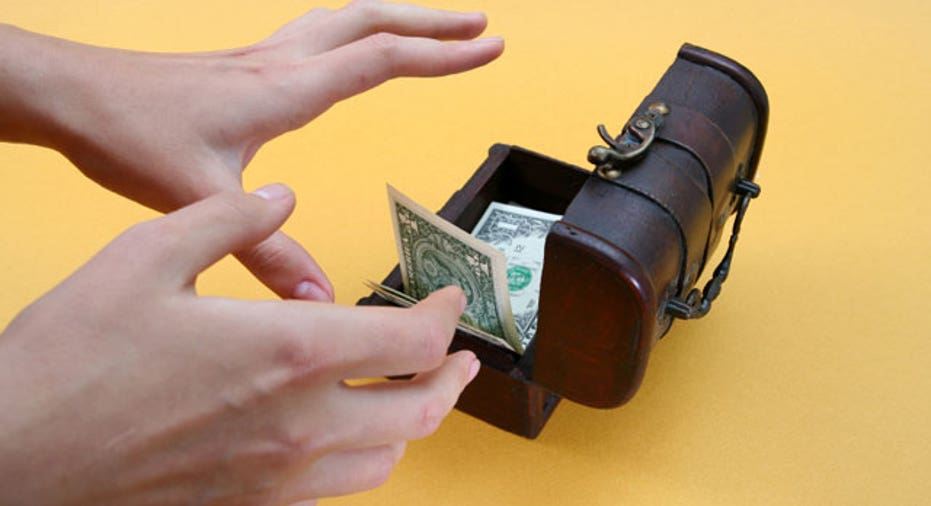Forget New Year's: Start Saving Now

If you look around your home on New Year's Day and see half-opened holiday gifts, remnants from an over-the-top New Year's bash and checking overdraft notices sprinkled amid the confetti, you may think that a New Year's resolution is the solution to your spending woes.
But wouldn't it have been nice if you didn't blow so much money in the first place? It's something you have the power to do right now.
Saving more money is one of the most popular resolutions out there, along with losing weight and quitting tobacco. But if you're like most of the millions of Americans who make New Year's resolutions, there's a good chance you'll break that resolution in less than six months.
So rule number one? Don't wait until January 1 to make your resolutions. Instead, resolve to change your financial behavior now. Because if you're serious about turning your spending habit into a savings habit, it makes no sense to rack up more debt than you have at this moment.
The time is now
A common resolution mistake is setting unrealistic goals. If you make it your resolution to save $10,000 next year--after a year in which you saved almost nothing--the enormity of the switch may prove too much and discourage you from even trying.
Starting small can be a better way to give yourself a reachable goal. And it's easy to start small, even on the tightest budget. Here are some steps to get you started:
1. Track your spending to find room in your budget
Start by tracking your spending--every single dollar. After a month, you'll likely notice where you spend more than you should. Those quick drive-thru breakfasts? Two a week could equal $10. Cut those out and you've found $40. Find more examples of careless spending like that and you'll see the savings add up quickly.
By changing a few simple habits--ordering a coffee instead of a flavored mocha, for example--you may find room in your budget you never knew existed.
2. Build your emergency fund first
Before you put that extra money anywhere else, build an emergency fund. Just as the name implies, an emergency fund is money set aside for sudden, unexpected expenses. These could come from busted plumbing in your home or the toasted clutch on your lemon of a car--or even the ER visit you have to endure after trying to fix the plumbing and the car on your own.
Emergency funds aren't elaborate financial investments. They are nothing more than a few thousand dollars tucked away in an easy-to-access savings account that's reserved strictly for emergencies. Even if it takes a year to save up that $1,000, make it a priority. You'll be glad you did when trouble strikes.
3. Now start paying stuff off
Here's a dirty little secret credit card companies don't want you to know: You can't save money if you're carrying high-interest debt. The math is pretty simple. If you're putting $100 in a savings account each month, but incurring $100 in interest charges on your debt at the same time, you're not really saving anything.
Instead, take that $100 and apply it to your debt. Then, as you pay off high interest debt, take the $100 and whatever you were paying on that debt and apply it to the next. Keep doing this until all your debt is paid off.
By employing this "snowball effect," you can save hundreds, if not thousands, in interest payments. After all, a $3,000 credit card balance at 19.8% could take nearly 20 years to pay off if you just paid the minimum balance. The cost? More than $10,000 in interest charges.
4. Don't ignore free money
If you have the opportunity, invest in your company's 401(k) plan. Most employers will match your contribution up to a certain percent, so ignoring this savings tool is like leaving free money behind.
And here's a twist. Because of that employer contribution, it's OK to start saving by way of your 401(k) before you pay off all your debt. Better still, since your contributions will be automatic, you won't even have a chance to spend that money before it's safely tucked away. Which leads us to ...
5. Make savings automatic
Your bank can provide an automatic transfer of funds from your checking to your savings account each month if you so desire it. And yes: You definitely should desire it.
This automatic transfer makes savings simple for the same reason investing in your 401(k) is simple--you never have to see the money. And what is out of sight is out of mind--and away from the hole that may be burned into your pocket.
Just make sure you don't fall prey to the easy access of most savings accounts. Online banking makes it very easy to transfer money back into your checking account. So if you're serious about saving, pretend that account isn't even there.
With these simple steps, you can improve your financial habits at any time of the year--no bleak New Year's Day scenario required.
The original article can be found at SavingsAccounts.com:Forget New Year's: Start saving now
Related Links